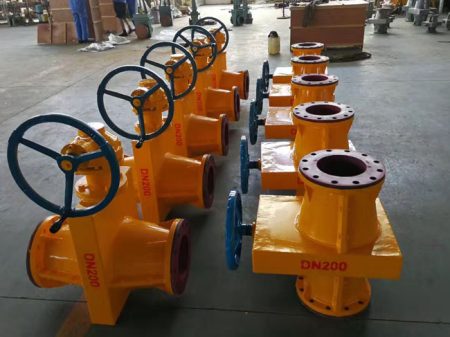
Mining and industrial operations rely on slurry valves? to handle abrasive and corrosive fluids. Common types include knife gate, pinch, ball valve, butterfly valve, check, and control valves, each serving a specific function. Engineers select the appropriate slurry valves? by considering factors such as wear resistance, corrosion protection, pressure and temperature ratings, and flow requirements. Choosing the right slurry valves? ensures longer service life and reduces maintenance needs. For instance, an electric ball valve or pneumatic ball valve offers precise control in automated systems. Additionally, selecting the correct material and design for the ball valve or butterfly valve based on the slurry’s characteristics is crucial for optimal performance.
Key Takeaways
- Pick slurry valves by looking at slurry type, pressure, temperature, and flow. This helps valves last longer and need less fixing.
- Choose valve materials and coatings that fight abrasion and corrosion. Use stainless steel, alloys, or elastomer linings to keep valves safe from harm.
- Get the right valve size so slurry moves well. This stops wear and blockages in the system.
- Use valve types that fit your slurry and system. Knife gate works for thick slurries. Pinch valves are easy to fix. Butterfly valves are good for big pipes.
- Check and take care of valves often. This helps find problems early and saves money on repairs.
- Think about using automation and smart controls. These can make things safer, control flow better, and spot problems early in slurry systems.
- Buy valves from brands you trust. Good brands have strong designs, spare parts, and digital tools for better performance.
- Look at both the first cost and long-term savings. Quality valves need fewer repairs and help plants work better.
Selection Factors
Abrasion and Corrosion
Materials
Mining and industrial jobs often move slurries that can scratch or eat away at things. The material of the valve is very important for stopping damage and chemical problems. Engineers usually pick stainless steel, hardened steel, or high-nickel alloys for the valve body. These metals are strong against scratching and rusting. When there is a lot of slurry, duplex stainless steel or special alloys can make the valve last longer. Valves with elastomer linings also help protect in tough places.
Coatings
Coatings give extra protection to valves. Makers put ceramic, epoxy, or rubber linings inside the valve. These coatings keep the valve safe from rough bits and harsh chemicals. Sometimes, using both hard-facing and polymer coatings works best. Checking the coatings often helps stop sudden problems.
Tip: Always pick the right valve material and coating for the slurry’s chemistry and particle size to make the valve last longer.
Pressure and Temperature

High-Pressure
Slurry systems can have a lot of pressure. The valve must handle this pressure without leaking or bending. High-pressure valves have stronger bodies and tough seals. Engineers should look at the pressure rating and make sure it fits the system. For very hard jobs, trunnion-mounted ball valves or heavy-duty knife gate valves work well.
Temperature Extremes
Hot or cold temperatures can change how a valve works. Some slurries are hot, and some are cold. Valve materials must not crack or get weak in these conditions. Metal-seated valves are good for hot slurries. For cold places, soft elastomer seats keep the seal tight.
Size and Flow
Sizing
The right size valve helps the slurry flow well and keeps the valve from wearing out fast. If the valve is too big, it can make the flow rough. If it is too small, it can block the flow and raise the pressure. Engineers figure out the best size by looking at flow rate, pipe size, and slurry type.
System Impact
The way a valve is made changes how the whole system works. Butterfly valves let the slurry move easily. Ball valves close tightly but can trap solids. Picking the right valve helps the system work better and stops clogs.
Note: Doing regular maintenance and picking the right size helps slurry valves last longer and keeps the system running.
Maintenance and Reliability
Service Life
Slurry valves work in tough places every day. The slurry has rough bits that can wear out the valve fast. Chemicals in the slurry can also make the valve weaker over time. These things can make the valve not last as long if you do not use the right design and materials.
Engineers pick strong alloys or elastomer linings to help valves last longer. Checking valves often helps find damage early. If teams find problems soon, they can fix or change parts before the valve breaks. This keeps the system working and stops big breakdowns.
Tip: Valves with special coatings or hard-facing can last much longer, even in places where there is a lot of wear.
How long a valve lasts also depends on the right size and good installation. A valve that fits well will not get as much stress and will last longer. Using parts from the same maker helps them work together and lowers the chance of early problems.
Downtime
Downtime means the system stops and work is lost. This costs money and slows down mining and industrial jobs. Some things can make downtime worse:
- Rough slurry can wear out valves and pipes, so they need fixing often.
- Picking the wrong valve can cause it to stick or not seal right.
- Using parts from different brands can make the system work badly or be unsafe.
- Hard slurry systems need skilled people to design and take care of them.
These problems slow down work and make things less safe. If a valve breaks, the whole system might have to stop for repairs. Fixing it can take hours or even days, depending on how bad the problem is.
To stop downtime, many places use strong materials and smart system designs. Special tools can watch how valves work and warn teams about problems early. Training workers helps them fix things fast and handle tricky systems.
Note: Buying good valves and doing regular checks helps keep the system running and stops surprise shutdowns.
Taking care of valves and making sure they work well helps mining and industrial jobs stay safe and run better. By fixing problems and using the right tools, teams can keep their slurry systems working well for many years.
Slurry Valve Types
Knife Gate Valves
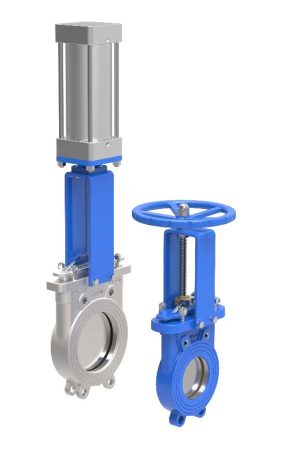
Design
Knife gate valves have a sharp blade that cuts thick slurries. The flat gate slides into the flow and slices solids. It closes tightly against the seat to stop leaks. Most knife gate valves have a full-bore opening. This shape lets slurry move through without clogging. The body is often made from stainless steel or high-alloy metals. These metals help stop scratching and rusting. Engineers like knife gate valves because they are simple and easy to fix.
Applications
Mining and industrial plants use knife gate valves in pipes with thick or rough slurries. These valves work well when there are lots of solids. People put them in tailings lines, concentrate pipes, and thickener underflow systems. Knife gate valves are best for turning flow on or off. They do not control flow as well as some other valves. Still, they are great for slurry jobs that need a full shutoff. Their strong build makes them last in tough places.
Pinch Valves
Advantages
Pinch valves use a soft sleeve to control slurry flow. When closed, a part squeezes the sleeve shut. This stops the flow all the way. Pinch valves have many good points:
- No hidden spots inside, so solids cannot pile up.
- The sleeve keeps the slurry away from the valve body, so it wears less.
- It is easy to fix. You can change the sleeve without taking out the valve.
- Pinch valves work well with rough and harsh slurries.
These things make pinch valves a top choice for slurry jobs, especially where it must stay clean and easy to fix.
Limitations
Pinch valves also have some downsides. The sleeve can wear out fast in high pressure or heat. Not all pinch valves work with sharp or very hot slurries. Big pinch valves can be heavy and cost more. You must pick the right sleeve for the slurry’s chemistry. Even with these problems, pinch valves are still used a lot in mining and industry.
Ball Valves
Metal Seated
Metal seated slurry ball valves have hard metal parts for sealing. This helps them stand up to rough solids in the slurry. Metal seats can take more heat and pressure than soft seats. These valves shut tight and last a long time. Engineers use metal seated slurry ball valves for tough jobs, like high-pressure lines or when chemicals are strong.
Trunnion-Mounted
Trunnion-mounted slurry ball valves have a ball held by bearings at both ends. This makes them easier to turn and helps seal better. Trunnion-mounted valves are good for big pipes and high pressure. These valves control slurry flow well and stop leaks. Many mines use trunnion-mounted slurry ball valves for important shutoff and control spots.
Note: Picking the right slurry valves keeps mining and industrial plants safe and working well. Each valve type is best for certain slurry jobs.
Butterfly Valves
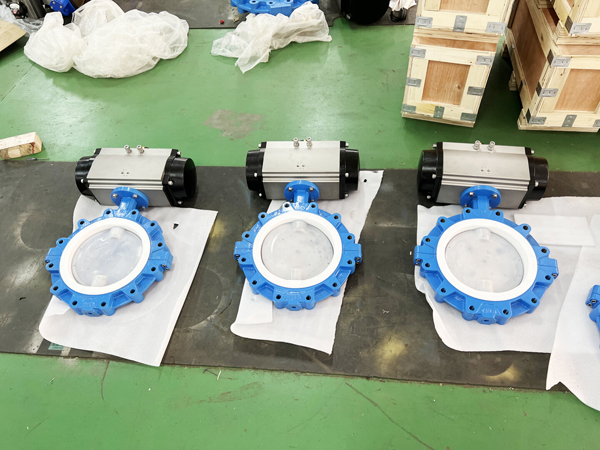
Large Diameter
Butterfly valves are important for big slurry pipes. They have a round disc that turns to open or close the pipe. Engineers pick butterfly valves for wide pipes because they are lighter and cheaper than other valves. Their small size makes them easy to put in tight spots. Workers can open or close these valves fast, which helps control slurry flow in large systems.
Makers use strong metals like stainless steel or coated alloys to build butterfly valves. These metals help the valves last longer against rough slurries. Some butterfly valves have seats and discs you can change to make them last even more. Big butterfly valves let a lot of slurry move with little pressure loss. This is why they are good for main pipes in mines and factories.
Tip: For very big pipes, butterfly valves are often the best and cheapest choice.
Use Cases
Butterfly valves are used in many mining and factory slurry jobs. They work well in water cleaning, tailings pipes, and thickener overflow lines. People use these valves to block off parts of a pipe or to control how much slurry moves. Butterfly valves are also good when you need to open and close them a lot.
Some places use butterfly valves with machines that open or close them from far away. This makes things safer and faster. Repair teams like butterfly valves because their simple shape means less time fixing them.
Butterfly valves are one of the top choices for slurry, especially in big jobs where you need strong and easy-to-fix valves.
Plug Valves
Strengths
Plug valves have a round or cone-shaped plug inside. The plug turns to open or close the valve. This makes a tight seal, so slurry does not leak out. Plug valves work well with thick or sticky fluids. They are simple, so there are not many parts to break.
Engineers like plug valves because they last a long time. The valve and plug can be made from hard metals or covered with elastomers. These things help the valve fight off damage from rough or harsh slurries. Plug valves are also quick to use, which is good if you need to stop flow fast.
Niche Uses
Plug valves are used for special jobs in slurry pipes. They are best when you need a tight seal and do not have much space. Some plants use plug valves in small pipes for samples or drains. Their small size makes them easy to fit in crowded places.
Sometimes, plug valves are picked for slurries with big solid pieces. The straight path inside helps stop clogs. In some cases, engineers use plug valves for high pressure or heat, but only if the valve can handle the slurry.
Note: Plug valves are not as popular as butterfly or knife gate valves, but they are great for some special jobs.
Check Valves
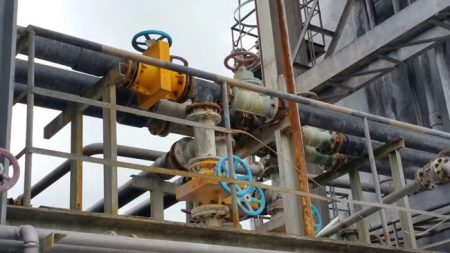
Backflow Prevention
Check valves keep slurry from going the wrong way in pipes. They let slurry move one way only. If the flow tries to go back, the valve shuts by itself. This keeps pumps and other machines safe. Check valves do not need someone to open or close them, so they are good for hard-to-reach places.
Makers use tough materials to build check valves for rough slurries. Some check valves close with a swinging part or a ball. The type depends on the pipe size and slurry kind.
Selection
Picking the right check valve depends on the slurry and the job. Engineers look at how fast the slurry moves, the pressure, and how big the solids are. Some check valves are better for tiny bits, while others work with bigger pieces.
Workers should pick check valves with seats you can change or linings that last longer. These things help the valve work for more years. Checking the valve often makes sure it closes right and does not leak.
Tip: Always choose a check valve that fits the slurry and the job for the best results.
Control Valves
Flow Regulation
Control valves are very important in mining and factories. These valves help control how much slurry moves in pipes. Operators use them to keep the flow steady, even if things change. This stops blockages and keeps machines safe from harm.
Makers build control valves for hard jobs. Some brands, like Valmet, use special stuff to handle rough slurry. Slurry knife gate valves can cut thick mixtures and keep things moving. Good control valves help plants follow safety and environmental rules.
Tip: Picking the right control valve helps slurry flow control and lowers the chance of costly shutdowns.
Automation
Automation has changed how plants use control valves. New systems use actuators, limit switches, and smart controllers to run valves without people. These tools let workers control slurry flow from a control room or far away.
Many companies, like Valmet, have smart valve controllers that watch how valves work all the time. These controllers can find problems early and tell repair teams. Some systems use digital tools and artificial intelligence to guess when a valve needs fixing. This helps plants stop surprise breakdowns and keeps things running well.
Automation also makes things safer. Automated control valves can act fast if pressure or flow changes. This keeps workers and machines safe from leaks or surges. Plants with automated slurry flow control often work better and need less fixing.
Note: Automation in control valves helps plants follow environmental rules and makes them work better.
Materials
Picking the right materials for a slurry valve is important. It helps the valve last longer and work better. Mining and industrial plants can be very harsh. These places can damage valves fast. Engineers must check what kind of slurry is used. They also look at the chemicals and how rough the particles are before choosing materials.
Body
Metals
Metals make up most of the slurry valve’s body. Stainless steel is a top pick because it does not rust. It also works with many chemicals. Carbon steel is good for jobs that are not too harsh. Some plants use ductile iron because it is strong and costs less. The right metal helps the valve last longer and not break too soon.
Alloys
Alloys are made by mixing metals to make them stronger. High-nickel alloys fight rust and acid. Duplex stainless steel is even stronger and does not crack easily. For very rough or sharp slurry, engineers pick tough alloys. Using the best alloy means the valve lasts longer and needs fewer fixes.
Tip: Always pick a metal or alloy that matches the slurry’s chemistry and roughness. This stops the valve from failing early.
Liner and Seat

Elastomers
Elastomers are rubber-like and line the inside of the valve. They also form the seat. These materials take in shocks from hard particles and stop leaks. Natural rubber is good for mild slurries. For stronger chemicals, engineers use synthetic elastomers like EPDM or nitrile. Elastomer linings protect the valve and make cleaning easier.
PTFE
PTFE is also called Teflon. It stands up to strong acids and bases. This material does not react with most chemicals. PTFE seats and liners help the valve seal tight and last longer. Plants with very corrosive slurries often use PTFE for extra safety.
Stem and Actuator
Manual
Manual actuators let workers open or close the valve by hand. These parts must be strong and simple to use. Stainless steel stems do not rust or bend. Manual valves are best where workers can reach them easily.
Automated
Automated actuators use electric, pneumatic, or hydraulic power to move the valve. These systems let people control flow from far away. Automated valves need strong stems and motors that work well. In big plants, automation saves time and keeps workers safe by needing less hands-on work.
Note: Picking the right materials for each valve part helps it last longer and work better, even in the hardest slurry jobs.
Best Valves for Slurry Applications
Leading Brands
Market Leaders
Some companies are the top choices for slurry valves. DeZURIK, Bray, Isogate, Vent-Tech, and SlurryFlo are well-known for making strong and reliable valves. These brands build valves that work in tough mining and industrial places. Their products can handle slurries that scratch or eat away at metal.
- DeZURIK makes many knife gate valves and pinch valves. Their valves are made to last and are simple to fix.
- Bray builds butterfly valves and ball valves for big mining jobs. Their valves work well in large systems.
- Isogate is known for pinch valves and knife gate valves. Their valves are good for hard jobs with lots of solids.
- Vent-Tech makes check valves and control valves. Their valves help stop backflow and control how slurry moves.
- SlurryFlo makes control valves that help manage flow very well. Their valves last a long time in rough slurry systems.
Note: Top brands spend money on new ideas and testing. They make sure their valves work well in real mining and factory jobs.
Reliability
Reliability is very important in mining and factories. The best brands use strong materials and special coatings. Their valves are made to fight scratching, rust, and high pressure. Many brands have bi-directional sealing, so the valve can seal both ways. This helps stop leaks and keeps workers safe.
Engineers like these brands because their valves last longer and need less fixing. Many valves have seats and liners you can change. This makes repairs fast and easy. Some brands also give digital tools to watch how valves work. These tools help workers know when to fix things before they break.
| Brand | Valve Types | Key Strengths |
|---|---|---|
| DeZURIK | Knife gate, pinch | Durability, easy repair |
| Bray | Butterfly, ball | Large diameter, automation |
| Isogate | Pinch, knife gate | Severe service, solids |
| Vent-Tech | Check, control | Backflow, flow regulation |
| SlurryFlo | Control | Precision, long service life |
Top Models
Knife Gate
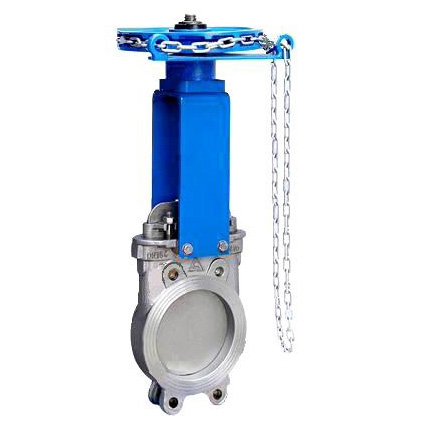
The KGV series from DeZURIK and the WH series from Isogate are top knife gate valves. These valves have big openings and hard seats. They can move thick, rough slurries without getting blocked. Engineers use these valves in tailings, concentrate, and underflow pipes. Their strong build helps them last a long time, even in hard jobs.
Pinch
The MP from Isogate and the PPV from Weir’s Isogate are top pinch valves. These valves use sleeves that are tough and do not wear out fast. Workers can change the sleeves quickly, so there is less downtime. Pinch valves are great for jobs with lots of solids and harsh chemicals. They also work well when the system opens and closes a lot.
Tip: Pinch valves let slurry move straight through. This stops solids from piling up inside the valve.
Ball
The Series 5000 from Bray and the metal seated ball valves from DeZURIK are strong ball valves. These valves use special metals and coatings to fight rough slurries. Trunnion-mounted ball valves are easier to turn and seal better. Ball valves are best for high-pressure pipes and systems that use machines to open and close them.
Check and Control
Vent-Tech check valves and SlurryFlo control valves are top picks for flow control and stopping backflow. Vent-Tech check valves have tough seats and bodies that do not rust. These parts help the valves work well in hard places. SlurryFlo control valves let workers adjust flow very carefully and last a long time. Their special design helps stop wear and keeps the flow smooth.
Note: Engineers pick check and control valves by looking at pressure, flow, and slurry type. The best models can work with machines and be watched from far away.
Successful Slurry Valves in Practice
Application Matching
Slurry Properties
Engineers always start by looking at the slurry itself. They check if the slurry has large or small particles. They also test if the fluid is thick or thin. Some slurries have sharp rocks that can scratch metal. Others have chemicals that can eat away at the valve. The right valve must handle these challenges. For example, a mining site with heavy, gritty slurry needs a valve with a hard metal body and a strong seat. In contrast, a plant with acidic slurry will need a valve made from special alloys or lined with PTFE. Matching the valve to the slurry’s properties helps prevent leaks and early failure.
System Design
System layout also affects valve choice. Engineers look at pipe size, flow speed, and where the valve will go. Some systems need valves that open and close often. Others need valves that stay open most of the time. In tight spaces, a compact valve like a butterfly valve works best. For pipes with lots of bends or changes in direction, a plug valve or ball valve may be better. Good system design means fewer clogs and less wear on the valve.
Tip: Always review both the slurry and the system before picking a valve. This step leads to more successful slurry valves in real-world use.
Maintenance Needs
Accessibility
Maintenance teams need to reach valves easily. If a valve sits high up or behind other equipment, repairs take longer. Plants often place valves where workers can check them quickly. Easy access means less downtime and safer repairs. Some valves, like pinch valves, allow for fast sleeve changes without removing the whole valve from the line.
Spare Parts
Spare parts keep the system running. Plants that stock extra sleeves, seats, or seals can fix valves faster. Leading brands offer kits with common parts. This support helps teams avoid long waits for repairs. Choosing a valve with easy-to-find parts makes maintenance smoother.
| Maintenance Factor | Why It Matters |
|---|---|
| Accessibility | Faster, safer repairs |
| Spare Parts | Less downtime |
Budget
Cost vs. Performance
Budget always matters in mining and industry. Some valves cost less at first but wear out quickly. Others cost more but last much longer. Engineers compare the price to how long the valve will work. A higher-quality valve may save money over time by reducing repairs and shutdowns.
Ownership
Total ownership cost includes the price, installation, maintenance, and downtime. Plants that invest in successful slurry valves see fewer breakdowns and lower repair bills. They also avoid lost production from valve failures. Smart buyers look at the full picture, not just the price tag.
Note: Picking the right valve saves money and keeps the plant running smoothly.
Slurry Valve Industry Market
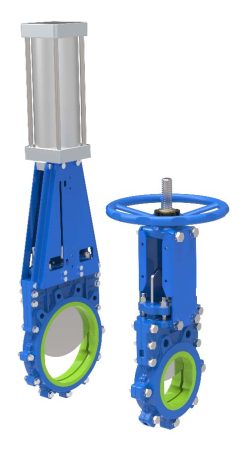
Market Overview
Global Market Size
The global slurry valve market is getting bigger as mining and factories grow. Experts say the market is worth more than $1.5 billion in 2024. This number counts valves used in mining, mineral processing, power plants, and wastewater treatment. Every year, more people want strong and dependable slurry valves. Companies build new systems and fix old ones. Fast growth in some countries also means more need for better valve solutions.
Note: The market size includes both new valves and replacements. Many factories swap out old valves to work better and stop delays.
Key Growth Regions
Some places help the slurry valve market grow faster. Asia-Pacific is first, with China, India, and Australia spending a lot on mining and factories. North America is next, with the United States and Canada working to update and follow rules. Latin America, like Brazil and Chile, needs more valves because of more mining. Africa is also important, with new mines and better buildings.
| Region | Key Drivers |
|---|---|
| Asia-Pacific | Mining, infrastructure |
| North America | Modernization, compliance |
| Latin America | Mining expansion |
| Africa | New projects, upgrades |
Major Players
Leading Manufacturers
A few companies are leaders in the slurry valve business. DeZURIK, Bray, Isogate (Weir Minerals), Vent-Tech, and SlurryFlo are known for new ideas and trust. These companies make many types of valves for tough jobs. They care about quality, long life, and easy fixing. Their valves work for big mines and small factories.
- DeZURIK: Famous for knife gate and pinch valves.
- Bray: Makes butterfly and ball valves.
- Isogate (Weir): Has pinch and knife gate valves for hard slurries.
- Vent-Tech: Makes check and control valves.
- SlurryFlo: Sells advanced control valves for careful flow control.
Emerging Competitors
New companies are joining the market with smart designs and new materials. Some come from China, India, and Eastern Europe and offer cheaper choices. A few startups focus on digital tools and smart valve tech. These new brands compete with old ones by giving lower prices and cool features.
Tip: Buyers should look at both old and new brands. New companies might have special answers for certain jobs.
Market Trends
Technological Advancements
Technology is changing the slurry valve world. Makers build valves that last longer and fight wear better. More new systems use automation and digital checks. Smart parts and sensors help workers watch valves all the time. These changes cut repair costs and make systems work better.
Sustainability and Regulations
Rules for the environment make companies use greener ways. Many makers use materials that can be recycled and safe coatings. Factories pick valves that stop leaks and save energy. Following world rules is now very important. Companies that use green tech can do better in the market.
Alert: Green choices and following rules will keep shaping what valves people buy in the slurry valve market.
Growth Drivers and Challenges
Mining and Industrial Demand
Mining and industrial jobs help the slurry valve market grow. These jobs need strong valves for tough slurries that can scratch or eat metal. When mining companies start new sites, they need more reliable valves. Factories that clean minerals, chemicals, or wastewater also want better valve solutions.
Many countries spend money on new buildings and energy projects. These projects use pipes that move slurries. Valves are important for keeping these systems safe and working well. When companies fix old plants, they put in new, high-quality valves. This makes the market for new and replacement valves bigger.
Rules for the environment make companies use better equipment. Valves that stop leaks and waste help companies follow these rules. Because of this, makers build valves that last longer and work in hard places.
Note: More mining and factories want automation. Automated valves let workers control flow from far away and make things safer.
Supply Chain and Economic Factors
Problems with supply chains are a big challenge for the slurry valve market. Many makers get metals, elastomers, and parts from around the world. If shipping is slow or there are not enough materials, making valves takes longer. These problems make it hard for companies to deliver valves on time.
When steel, alloys, or energy cost more, valve prices go up. If raw materials cost more, makers must charge more for valves. Some customers wait to start projects or look for cheaper valves. This can slow down the market.
Money problems like inflation or changes in currency also affect the market. Companies may spend less when times are tough. They might wait to fix plants or spend less on repairs. This means fewer new valves are needed.
| Challenge | Impact on Market |
|---|---|
| Raw material shortages | Production delays |
| Higher material costs | Increased valve prices |
| Shipping disruptions | Delivery challenges |
| Economic downturns | Lower demand |
Alert: Companies that handle supply chains and costs well can do better. They can help customers even when the market has problems.
Knife gate, pinch, ball, butterfly, and check valves all have their own jobs in mining and industrial slurry systems. Engineers pick valves by looking at how well they stand up to scratching, how much pressure they can take, and if they work with the chemicals in the slurry. Picking the right material, like stainless steel or elastomer linings, helps the valve last longer.
- Think about what your system needs and what the slurry is like before picking a valve.
- Ask trusted suppliers for advice from experts.
Tip: Plan a visit to your site or talk to a valve specialist to make sure you get the best valve for your job.
FAQ

What is a slurry valve?
A slurry valve helps control thick, rough liquids in mines and factories. It is made from strong stuff so it does not break or wear out fast. Engineers use slurry valves for hard jobs where normal valves would not work.
Which valve type works best for high-abrasion slurries?
Knife gate and pinch valves are good for rough slurries. They use hard metals or elastomer linings to stop damage from sharp bits. These valves last longer in tough mining places.
Can automated valves improve plant safety?
Automated valves make plants safer because workers can use them from far away. This means people do not have to be near dangerous spots. Automation also means less lifting and fewer accidents.
What materials resist chemical corrosion in slurry valves?
Stainless steel, high-nickel alloys, and PTFE linings fight off chemical damage. These materials keep valves safe from acids, bases, and strong chemicals in slurries.
How do engineers size a slurry valve?
Engineers pick the right size by looking at pipe width, flow speed, and slurry type. The right size helps the slurry move well and keeps the valve from wearing out. If the valve is too big or too small, it can cause problems.
Why do some valves fail early in slurry service?
Some valves break early because they are made from the wrong stuff, are the wrong size, or are not checked enough. Sharp bits and chemicals can wear out weak valves fast. Checking valves often and picking the right kind helps them last longer.
